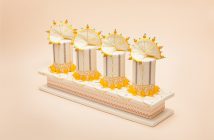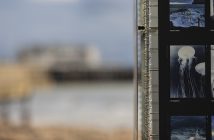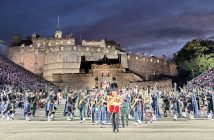Filmmaker and photographer Paul Joyce first met Dennis Hopper in 1986 and they remained friends until Hopper’s death in May this year. This is Paul’s personal tribute to the great man, featuring untold anecdotes and never-before seen photographs of Dennis in his hometown of Venice, California. It is a poignant portrayal of a pioneering Hollywood rebel with a cause who will be remembered as one of the greatest screen icons of our time.
It was different working in British television back in 1986. They thrust money in your purse and sent you around the world, and even threw in film crews. At that time Jeremy Isaacs (who, as well as setting up Channel 4, acted as godfather to me and my company Lucida Productions) heard me talking about the unique LA based independent production company BBS and how important it was as a trailblazer in the US indie cinema sector (remember that Jeremy had recently incorporated C4 in order to undertake just such a transformation of the UK independent television sector). My business partner at that time, Chris Rodley, until recently in charge of film programming at the ICA in London, fortunately knew one of the key players in the game, Dennis himself, from a previous encounter when he had set up a London screening of The Last Movie. So before we knew it we were bundled onto a 747 and told to come back with two “riveting” hours of primetime television. What an extraordinary thing that seems now, in an age when the arts documentary has difficulty getting arrested, let alone financed or even (God help us) aired.
It is curious that BBS was little known then, as indeed it still is now, even though its activities had placed a small but significant time-bomb into Hollywood’s very foundations. Bert Schneider, a legendary producer whose father worked for Columbia, set up BBS and would stamp his indelible mark on Hollywood with a handful of great pictures – Five Easy Pieces (1970), The Last Picture Show (1971), The King of Marvin Gardens (1972), etc. But before BBS emerged (the initials standing for Schneider, director Bob Rafelson and artist’s manager Steve Blauner) came a couple of runaway successful pictures that helped finance the whole operation. One was Head (1968), starring pop phenomenon The Monkees and the other, Easy Rider (1969), which announced the arrival of a very special talent indeed, director Dennis Hopper.
So in order to tell the complete BBS story, we intended to confront the prime progenitor of this tremendous run of American cinema. The problem was, at the very moment our plane began its descent into LAX, Dennis Hopper was being carted off to a clinic with a suspected overdose, the result of severe alcohol and substance abuse. Oh dear, what to tell Jeremy Isaacs back home? Well maybe best to keep schtum. Get on with something else. Perhaps our man may even recover?
And here Bert Schneider came to the rescue – as he did on a number of occasions in Hopper’s life and career – by visiting Dennis in hospital at his lowest ebb, by gently cajoling and encouraging him to try driving again, going out again, using a camera again. This act of friendship carried Dennis through his worst moments and helped him to emerge, seemingly unscarred, three weeks later into our open, camera extended arms.
During the three weeks or so that we were waiting for Dennis to recover, I shot more film in a short month than I have before or since. Apart from laying down the two hours of the BBS story (Out of the Blue and into the Black), I did a 90 minute film on Monte Hellman (Plunging on Alone) another on Peter Bogdanovitch (Pieces of Time) and ultimately a final one on Dennis himself (Some Kind of Genius). So we were by no means just lounging around hotel pools, as some of the early C4 commissions chose to spend their time, and money, without on occasion even completing the film they were charged to deliver!
When we finally got the call to say we could now visit, it was with great trepidation that we approached Dennis’ house in Venice, a suburb of LA. But his chosen retreat on Indiana Avenue was not located in the top end of town by any means, but in the decidedly ‘wrong side of the tracks’ area, in what seemed to be a large galvanised shed surrounded by abandoned cars and shopping trolleys. It was here that Dennis would spend over thirty years hunkering down and gradually increasing the perimeter’s fortifications, rather like John Wayne might have done with his garrison in Fort Apache. And I can assure you the natives here were quite as unfriendly as John Ford’s.
Gingerly, Chris Rodley edged forward to the door as we hung around the unit vehicles, nervously puffing on Marlboro Lights (as everyone did then). After fiddling with the entry-phone, which was still faulty on every occasion I visited, which must have been thirty times over as many years, Chris disappeared shortly to be followed by his beckoning finger poked round the door indicating it was “all OK”, a signal agreed in advance. So in we piled to find a suntanned and very fit looking Dennis, neatly coiffured and dressed like an enormously wealthy investment banker or hedge fund manager: dark grey silk suit with discreet stripes, matching tie and a dark shirt with tiny white polka dots. Clearly master of the situation and the soul of hospitality, he was “off” everything but cigarettes, which he chain-smoked whilst we were there, using the 100mm-sized white tubes as batons to reinforce points during the filmed interviews (he gave up fags shortly after this, and stayed clean until in the last decade of his life when he developed a penchant for Havana cigars).
But first things first…




